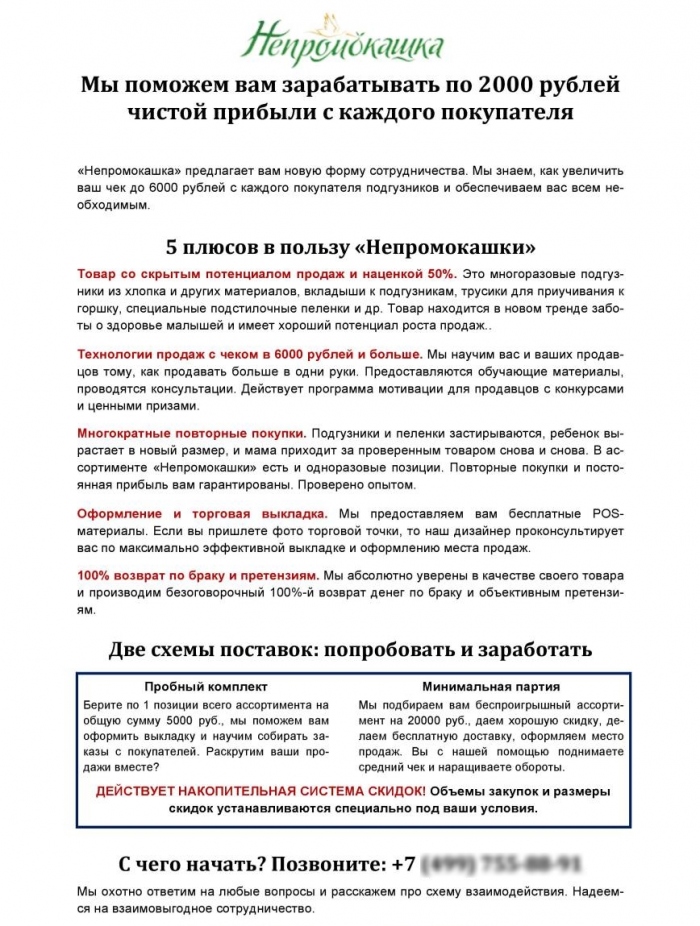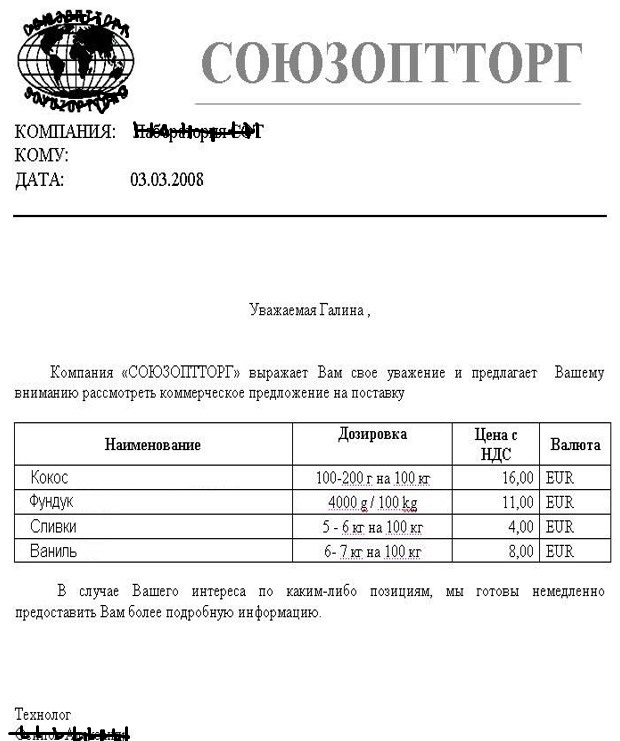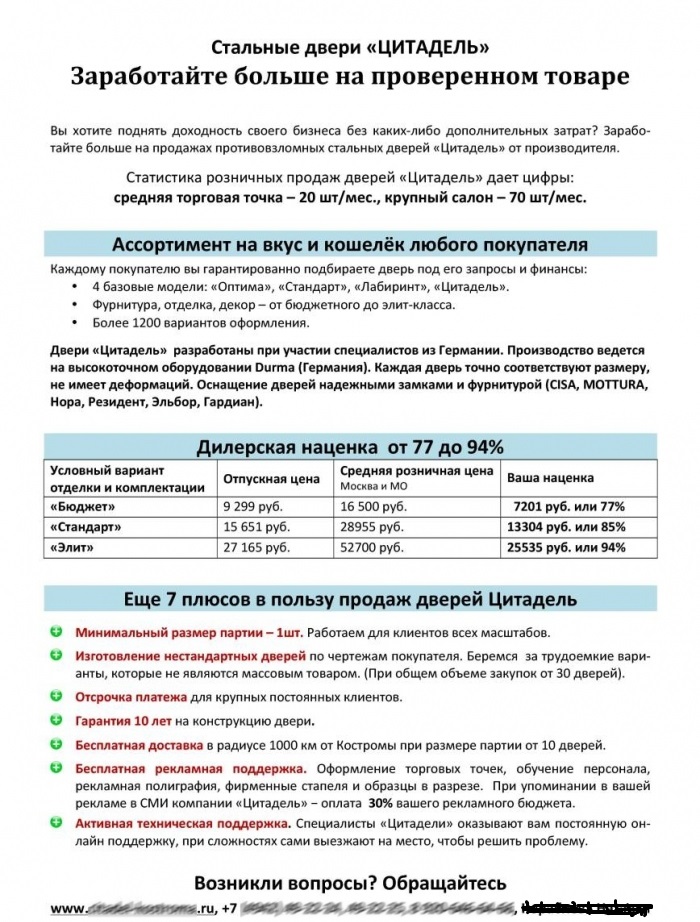In business, more and more often, the truth is confirmed that supply creates demand. But only a competently composed proposal. Such that from the first words "hooks" the client, and does not make him once again dismiss annoying advertising. The article will consider the compilation of a competent price offer, its samples are presented, as well as the most important secrets of a catching letter.
What is it?
Let's start with the definition. Commercial and price offers - is there a difference between them? In fact, these are related concepts that only the following distinguishes:
- In the price proposal, emphasis is placed on the value of the goods. Therefore, it is lower in some parameters and positions than competitors.
- A commercial offer does not focus on price. In most cases, it does not differ from the cost of similar positions with competitors. The task of the commercial proposal is different. Show why it is more profitable for the consumer to contact this particular supplier or seller.
Both commercial and price offers are marketing tools that are sent to recipients by mail (electronic or regular) in order to get a response.
And this is the key point. The response is the transfer of a potential consumer, client to the next stage of cooperation. And this is a business meeting, presentation of goods or even signing a contract.

Varieties
The price offer may be of such varieties:
- Cold.
- "Hot."
- Public offer.
The first two varieties are more typical for marketing and sales, and the last for jurisprudence.
We will get acquainted with the types of special offers in more detail.
Cold look
These are the offers that are sent to unprepared ("cold" in marketing) customers. This is what is defined as spam. And many customers do not like him. But if you are interested in spam, it means that the special offer has been compiled brilliantly. Its success also depends on a correctly formed target list - a list of message recipients.
Spam usually weighs when it arrives at the recipient’s mail at an important moment. For example, it is time for students to graduate theses. The recipient has problems with the uniqueness of the text. He does not know how to fix this moment quickly and efficiently. And then he receives an offer in the mail: "We quickly raise the uniqueness of term papers, dissertations in 3 days for 500 rubles!" Naturally, the student will want to get acquainted with the service. And it is likely that he will order it right away.

Three risks of throwing
The main objective of such a proposal is to make the whole text be read. If it is slurred, boring, extended, the letter from the first term is sent to the basket. Marketers even identified the top three risks of removing a cold offer:
- At the receiving stage. The letter should stand out in a heap of spam that arrives in the mail daily. This is either a flashy, enticing headline or a non-standard theme. If the letter arrives by regular mail, an unusual, bright envelope is selected.
- At the opening stage. The letter should immediately attract an attractive offer (with an offer - it will be discussed later).
- At the stage of reading. Here the compiler must operate with relevant, not boring methods of persuasion and marketing chips.
The answer to the price offer comes more likely if it is concise and short, no more than 1-2 pages. After all, the recipient does not intend to devote much time to the letter that has fallen on him from nowhere.Therefore, the "poem" of 10-20 pages, he is likely to deprive attention.
Marketers appreciate the "cold" offers for their mass - it’s enough to come up with a good text once and send it out. But personalization in some cases bypasses such a cheap and fast way in many respects.
Hot view
The next type of price offer is hot. It is sent to a client already prepared for cooperation. This is a person who himself requested a price or commercial offer, who left his contacts to the manager.
Hot offers are already more detailed and voluminous. Therefore, 10-20 pages of text is not a record here, but the norm. Here is given as much attractive information as possible on the proposal of interest to a person.
It is important that the client retains his interest in the entire text. Therefore, "hot" offers are often made out in the form of presentations with visual effects.

Offer
One of the varieties of the price offer for services or goods, which is a public contract that does not require signing. Such an offer is widely used by online stores.
An offer is considered concluded when the client has fulfilled the condition specified in it. For example, I registered on the site.
Structure
If you once sent a request for a price offer, then most often you received a selling text, rather than a price list with prices for services and goods. There is no mistake. A commercial quotation is a variation, albeit a special one, of a commercial text. Only one feature will highlight it - the offer. But in general, a standard structure develops:
- Running title.
- Headline.
- Lead.
- Offer.
- Benefits of the addressee.
- Objection handling.
- A call to action.
- Afterword.
Consider the secrets of the formation of each of these elements.

Running title
Any of the samples of the price offer will contain this element. Here are its key features:
- A logo is placed in the footer so that the addressee immediately knows about the company offering cooperation.
- Contact information required. They can be supplemented with a mini-call: "Need an inexpensive smartphone? Visit the site ..."
- Header height - a couple of centimeters. This is especially important for "cold" offers, which should be extremely capacious.
Headline
Some theoretical information. The coefficient of price elasticity of supply is a numerical indicator that is designed to reflect the degree of change in the volume of goods and services offered in response to a change in their value.
Now back to the proposal. The title is one of its important elements. And especially for "cold" letters. Its task is simple and complex at the same time - to “hook” the reader with obvious benefit.
Therefore, a big mistake is made by those marketers who insert at the beginning the standard "price offer" and other abstract formulations. This is the surest way to provide a writing path to the trash. At the same time, for "hot" letters, the "price offer" is acceptable - by this name the addressee will quickly remember that an answer has arrived to his request.
The title should be a short answer to the questions:
- What?
- How many?
- At what price?
- From whom?
- When?
Lead
Marketers call the first paragraph of the sentence the lead. Comes from English. lead - lead. It is the lead that should arouse the reader's interest in the proposal. It tells about what is primarily important for the client.
Form a lead in four ways:
- From the problem.
- From the solution (if the reader has no problem).
- From expected objections.
- From emotions caused by the headline.
The most common way - from the problem. And here is an example of a price offer (lead): "There are a lot of shops selling computer equipment. However, most of them resell low-quality electronics. There is an option for those who want to buy durable equipment and at the same time save."

Offer
The form of the price offer will be faceless and dull without a bright offer. What is it? The word comes from the English. offer - "offer".This is the essence, the "heart" of the whole proposal. An understandable wording necessarily fits here - what exactly do you offer. Therefore, it is advisable to place the offer at the very beginning of the letter.
Offer always shows what benefit the recipient receives when responding to the offer. Therefore, it will not be true to accommodate the standard “Our company offers you computers” or “We suggest you attend lectures” here. Naturally, competitors will offer similar.
Therefore, the offer immediately impresses the reader with the benefit that he can get. The aforementioned "boring" offers can be easily transformed: "We suggest you save up to 10 thousand rubles by buying a new laptop!". Or: "At the lecture, we will demonstrate real-life examples of how to increase business profitability by 150% in one month." The goods and services in the offer are secondary. The main thing is the benefit that the recipient receives.
Many marketers advise after the offer (if space permits) to put graphic bright or funny images that visualize your goods and services or specific benefits. This will help the letter not look like a boring "tablecloth" of the text and additionally helps to maintain attention.
Benefit block
The next block also needs to be carefully thought out. It should list all the benefits that can attract a customer. But the benefits are not the properties and remarkable characteristics of the product.
When transferring benefits, it is important to maintain their targeting: “accessible to everyone”, “it will be created exclusively for you”, “understandable to beginners and lay people”. Marketers make a mistake when they say here "from their tower." The benefits should be close and attractive to the addressee, and not only to the author of the proposal.

Work with objections
It is important to remember immediately that it is impossible to fit into the offer a processing of all objections. Such prevalence will not do him any good. Therefore, only answers to the most important questions that may arise in the reader are inserted into the block:
- What is this company?
- Why should we trust her?
- Who used the services, where can I find their reviews?
- Where are the services provided (goods sold)?
Many companies include here evidence of their credibility, social significance. It will also be a good idea to declare guarantees. But here it is important not to get involved in the “praises” of your company. Information should be summarized briefly but succinctly. And do not contradict the price offer itself. The surest way is to list the facts.
Call to action
The mistake of many price and commercial offers is the weakness of this block. The call must be necessarily expressed by a strong verb. Compare: "Call us by number ..." or "You can call one of these phone numbers ..."
Another flaw: the authors of the proposal confuse the reader with a variety of communication options. The call still has to be for a specific action - calling the hotline, filling out an application on the site, writing a message in Viber, and so on.
An amazing moment, but many authors of special offers completely forget about this communication unit! That is, they colorfully describe the proposal, but do not indicate how to find them, how to contact them. An absurd mistake, but it takes place to be quite often.

Afterword
Marketing would not be marketing without the notorious "cherry on the cake." The postscript is the final component that should hit the reader with its brightness. To be a worthy reward for the addressee reading the letter to the end.
This is a pretty powerful motivating tool - practice shows that people read the afterwords most often (after viewing the captions in the pictures). Therefore, a successful marketer can not do without the coveted P. S.
One of the most successful moments is to insert a restriction in the afterword ("deadline" in the language of marketers). This is very useful for cold offers.If during a "hot" manager can call the client back and remind him of the imminent end of a profitable offer, then here it is sometimes the only way to talk about the restrictions of the action.
What is the limit set? This is standard either in time or in the quantity of the remaining goods (unsold services). Such a sample:
- "Only until October 10, when ordering cleaning services at company N, you get a 20% discount!"
- "Hurry up! Only 10 iPhones left at a special price!"
And here the companies make a mistake that noticeably undermines the customer’s trust in them - they do not fulfill promises. The client canceled the meeting with friends to order cleaning the apartment at a discount on October 9th. But on October 11, his friend ordered the same service at the same price. It is unlikely that the client will then want to go there again.
According to the above instructions, it is easy to compose your own exclusive letter. In addition, you can use, for example, samples of price offers, which are also placed in the article.
Conclusion
The price offer is not a faceless, boring price. This is a commercial text compiled according to certain canons, "hot" or "cold." Its purpose is to attract the attention of the addressee, to motivate him to respond. It is not easy, but it is possible if you adopt all the tips from this material.
